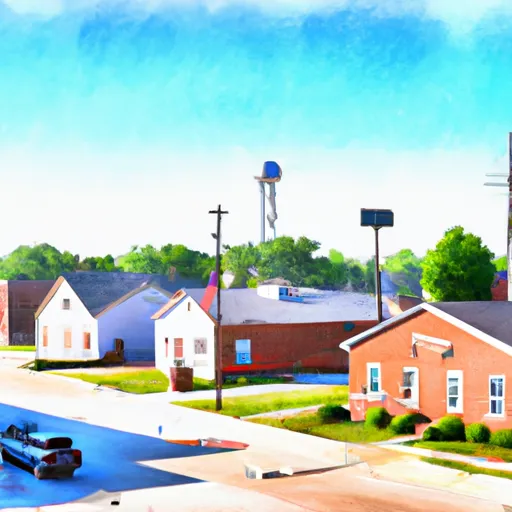-
 Snoflo Premium
Snoflo Premium
Get unlimited access to all our content
With no Ad interruptions! - Start Your Free Trial Login with existing account
Silvis
Eden Index
Climate
7.8
•
Recreation
2.8
•
Community
2.6
•
Safeguard
4.7/10

Silvis, Illinois is a small city located in Rock Island County, in the western part of the state. The city experiences a humid continental climate, with hot, humid summers and cold winters. Average high temperatures range from around 30°F (-1°C) in winter to 85°F (29°C) in summer, while average lows range from 15°F (-9°C) in winter to 65°F (18°C) in summer. Precipitation is fairly evenly distributed throughout the year, with an average of around 35 inches (89 cm) annually.
The hydrology constituents of Silvis are influenced by the nearby Mississippi River, which borders the city to the east. The river provides opportunities for various recreational activities, such as boating, fishing, and birdwatching. Silvis is also home to several parks and green spaces, including Hero Street Memorial Park, where visitors can enjoy picnicking, walking trails, and sports facilities.
In conclusion, Silvis, Illinois offers a diverse climate with distinct seasons, ample precipitation, and a range of outdoor recreation opportunities centered around the Mississippi River and local parks.
What is the Eden Index?
The Snoflo Eden Index serves as a comprehensive rating system for regions, evaluating their desirability through a holistic assessment of climate health, outdoor recreation opportunities, and natural disaster risk, acknowledging the profound impact of these factors on livability and well-being.
Climate Health Indicator (CHI): 7.8
Silvis receives approximately
901mm of rain per year,
with humidity levels near 81%
and air temperatures averaging around
10°C.
Silvis has a plant hardyness factor of
5, meaning
plants and agriculture in this region thrive during a short period during spring and early summer. Most
plants will die off during the colder winter months.
By considering the ideal temperature range, reliable water supplies, clean air, and stable seasonal rain or snowpacks, the Climate Health Indicator (CHI) underscores the significance of a healthy climate as the foundation for quality living.
A healthy climate is paramount for ensuring a high quality of life and livability in a region, fostering both physical well-being and environmental harmony. This can be characterized by ideal temperatures, reliable access to water supplies, clean air, and consistent seasonal rain or snowpacks.
Weather Forecast
Streamflow Conditions
Rock
Area Rivers
Rock
Snowpack Depths
Rock
Reservoir Storage Capacity
Rock
Groundwater Levels
Recreational Opportunity Index (ROI): 2.8
The Recreational Opportunity Index (ROI) recognizes the value of outdoor recreational options, such as parks, hiking trails, camping sites, and fishing spots, while acknowledging that climate plays a pivotal role in ensuring the comfort and consistency of these experiences.
Access to outdoor recreational opportunities, encompassing activities such as parks, hiking, camping, and fishing, is crucial for overall well-being, and the climate plays a pivotal role in enabling and enhancing these experiences, ensuring that individuals can engage in nature-based activities comfortably and consistently.
Camping Areas
| Campground | Campsites | Reservations | Toilets | Showers | Elevation |
|---|---|---|---|---|---|
| Lake Lincoln State Park | None | 426 ft | |||
| St. Francois State Park | None | 777 ft | |||
| Tickfaw State Park | None | 15 ft | |||
| Mississippi Petrified Forest | 15 | 294 ft | |||
| Bogue Chitto Water Park | None | 276 ft | |||
| Greenville - Lake Wappapello | None | 382 ft | |||
| Pere Marquette State Park | 80 | 644 ft | |||
| Percy Quin State Park | None | 416 ft | |||
| Sulphur Springs - Lake Wappapello | None | 391 ft | |||
| St. Peters 370 Lakeside Park | 50 | 426 ft |
Catastrophe Safeguard Index (CSI):
The Catastrophe Safeguard Index (CSI) recognizes that natural disaster risk, encompassing floods, fires, hurricanes, and tornadoes, can drastically affect safety and the overall appeal of an area.
The level of natural disaster risk in a region significantly affects safety and the overall livability, with climate change amplifying these risks by potentially increasing the frequency and intensity of events like floods, fires, hurricanes, and tornadoes, thereby posing substantial challenges to community resilience and well-being.
Community Resilience Indicator (CRI): 2.6
The Community Resilience Indicator (CRI) recognizes that education, healthcare, and socioeconomics are crucial to the well-being of a region. The CRI acknowledges the profound impact of these elements on residents' overall quality of life. By evaluating educational resources, healthcare accessibility, and economic inclusivity, the index captures the essential aspects that contribute to a thriving community, fostering resident satisfaction, equity, and social cohesion.

